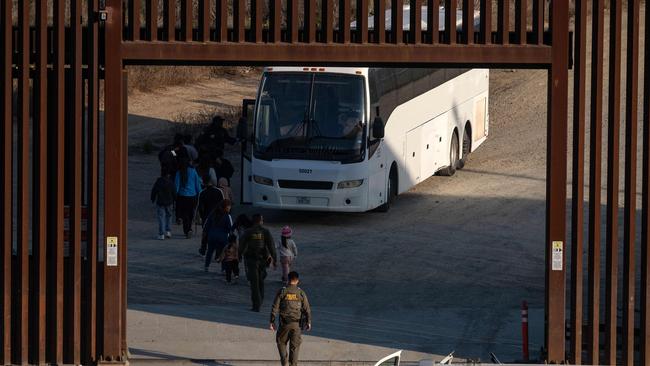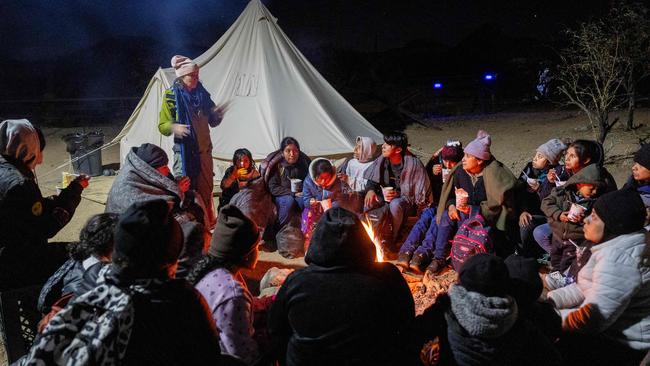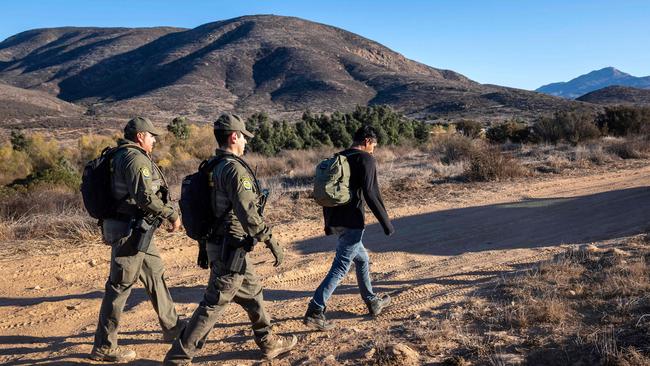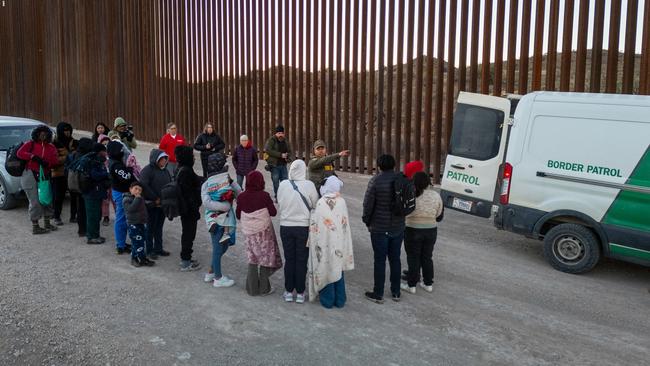Trump’s immigration playbook: breaking down his moves this week
Hundreds more border troops, migration raids: Donald Trump has issued a flurry of directives to expedite the removal of millions of undocumented immigrants from the US.

Since President Trump took office on Monday, he has issued a flurry of directives to expedite the removal of millions of undocumented immigrants from the US
Immigrant groups are bracing for large raids, with community leaders hosting frantic know-your-rights sessions and employers reporting that many immigrants are too fearful to come to work.
Here’s what you need to know.
The actions federal agencies are taking U.S. Immigration and Customs Enforcement, the agency responsible for arresting and deporting immigrants in the country illegally, rescinded longstanding rules directing federal immigration officers not to make arrests at sensitive locations such as schools, churches and hospitals.
Officials at the Pentagon said Wednesday that it was sending as many as 1,500 active-duty troops to the southern border. While the deployment of these troops is new, it follows a similar authorisation for active-duty troops on the border that existed under the Biden administration and has been in effect for some time.
The Pentagon is also sending helicopters and crews, as well as intelligence analysts, to support detection and monitoring efforts. The deployments would be complete by the end of this week, officials said.
The Pentagon will also begin the construction of temporary and permanent physical barriers for additional security to curtail illegal border crossings and illicit trafficking. Defence officials said there have been requests from Trump officials for potentially as many as 10,000 troops but they have yet to receive an order from them to send more.
The Department of Homeland Security adopted new guidelines allowing the government to deport immigrants who entered the country illegally as long as two years ago using a fast-track process that denies them a chance to plead their case before an immigration court.
At the Justice Department, Acting Deputy Attorney-General Emil Bove told federal prosecutors to investigate and potentially charge state and local officials in so-called sanctuary cities who hamper the administration’s stepped up enforcement of immigration laws, according to a copy of the memo viewed by The Wall Street Journal. It was part of a missive instructing prosecutors to increase investigations into the most dangerous undocumented immigrants, warning that deviations from the policy would need senior officials’ approval.
The directive also enlists the Federal Bureau of Investigation’s joint terrorism task forces, which have traditionally focused on international and domestic terror investigations throughout the U.S. and steer clear of immigration matters, to coordinate with the Department of Homeland Security to “assist in the execution of President Trump’s immigration-related initiatives.” And it urges department lawyers to take action against localities with policies that go against Trump’s executive orders.

What ICE is doing now
The Wall Street Journal reported last week that the administration planned to conduct a major operation in Chicago this week, but officials held back on those plans after they became public.
Immigration officers across the U.S. were still awaiting updated guidance from headquarters, according to people familiar with the matter.
ICE carried out targeted enforcement operations around the U.S. on Tuesday, but those operations were small in scope. Teams of five or six agents were giving priority to immigrants who were in the country illegally and had been convicted of or charged with a serious crime, typical of operations that have occurred under the past few presidents.
“ICE teams are out there today,” Tom Homan, the administration’s border tsar, said during an interview on Fox News. “We gave them direction to prioritise public-safety threats.” On Wednesday he said ICE had arrested 308 people he called “serious criminals.” The number of arrests is comparable to the 310 average daily ICE arrests during the Biden administration in the most recent fiscal year and the 467 average daily arrests in 2023, according to a Wall Street Journal analysis of arrest data.

What is happening with birthright citizenship
On his first day in office, Trump enacted an executive order to end recognition of automatic birthright citizenship for babies born to immigrants in the U.S. illegally as well as visa holders. On Tuesday, attorneys general from more than a dozen states filed a lawsuit stating that the order violates the 14th Amendment.
Trump is set to sign the Laken Riley Act On Wednesday, Congress approved a bill known as the Laken Riley Act, sending it to Trump’s desk for his signature. The bill requires that more immigrants in the U.S. illegally be kept in immigration detention, and it drew stronger-than-expected support from Democrats.
The bill would force the Department of Homeland Security to take into custody any person illegally in the U.S. who is arrested for theft, crimes involving bodily harm or assault of a law-enforcement officer.

What immigrant communities and advocates are doing
Lawyers for Civil Rights, based in Boston, launched rapid-response efforts to help immigrants, said Oren Sellstrom, the organisation’s litigation director. This includes training sessions to help people and community groups understand individuals’ rights if law-enforcement authorities show up on their doorstep, or they are detained. They also set up a hotline people can call to access pro bono legal help.
Wellington Z. Chen, executive director of the non-profit Chinatown Partnership Local Development Corporation, says potential deportations have been on the mind of immigrants in New York City’s Chinatown community. “People are on edge,” he said. “It doesn’t take rocket science to figure out that deportations are coming this way.” How schools and businesses are preparing Some businesses are reporting that migrant employees are too fearful to come to work. Jacob M. Monty, an immigration and employment lawyer in Texas, says he has been advising businesses to conduct “mock audits” of their workers’ I-9 forms, and to not delay addressing any problems or errors they find. Employers are required to complete the form after verifying an employee’s identity and eligibility to work in the U.S. by checking his or her original documents.
At the same time, Monty is warning employers not to seek out too much about their workers’ backgrounds, to avoid potential liabilities for information that is different from what appears on the I-9. “Any discussion with employees is fraught with danger. I’ve seen many employers attempt to take a compassionate approach with workers but end up having to terminate them.” School systems across the U.S. were also on alert. In December, New York City schools sent a message to principals about what to do if ICE agents arrive at schools. The Los Angeles school superintendent told families that the district welcomed all students and wouldn’t ask about or disclose immigration status. “I know this is a scary time for many. We stand with you. We will use every tool at our disposal to continue to support you,” Alberto Carvalho, superintendent of Los Angeles Unified School District, wrote in an email message Friday.
Dow Jones





To join the conversation, please log in. Don't have an account? Register
Join the conversation, you are commenting as Logout